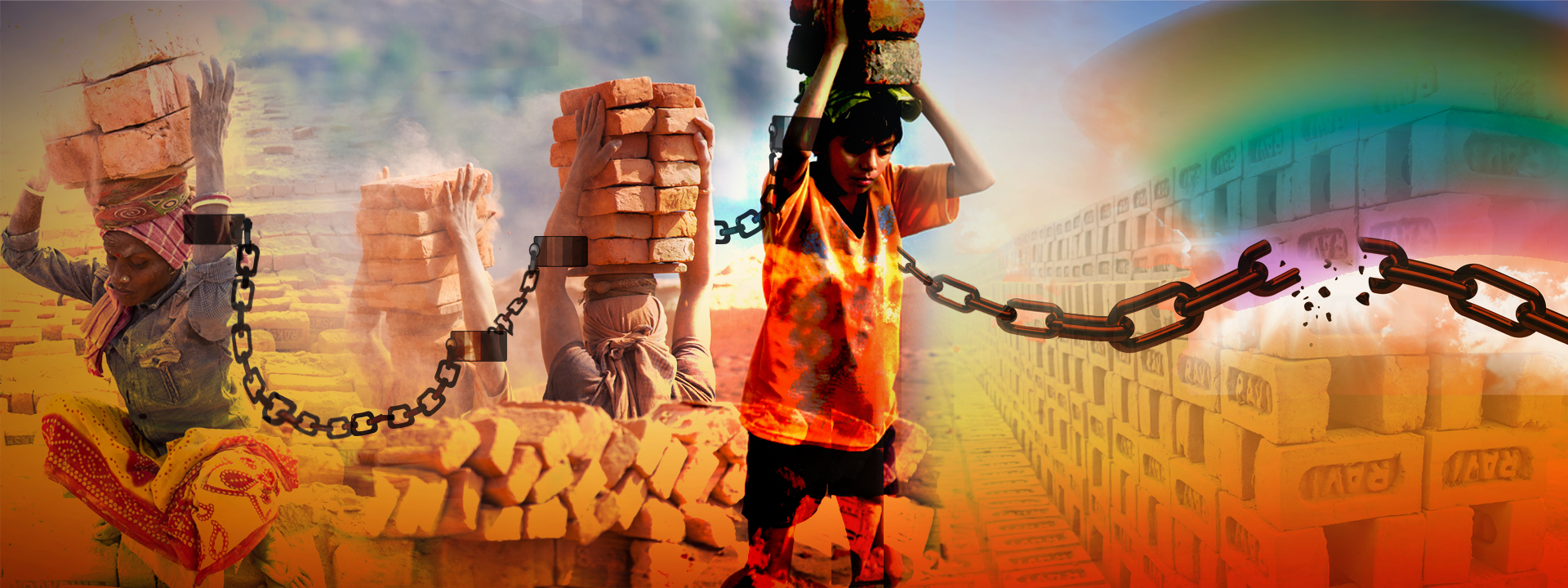|
Getting your Trinity Audio player ready...
|
For more than five years, Kala Ramesh and her family seared hot bricks for a local brick kiln owner in India’s southern state of Tamil Nadu. The working conditions were harsh, they often went unpaid, and they were barred from leaving what passed as a brick factory. But being among India’s hundreds of thousands of debt laborers, Ramesh and the family – along with their coworkers – had no choice but to put up with these challenges.
Now, though, the 41-year-old Ramesh and her husband are themselves co-owners of a brick kiln: Siragugal Bricks, which is community-owned by rescued bonded laborers in the village of Veerakanallore in Tamil Nadu’s Tiruvallur district.
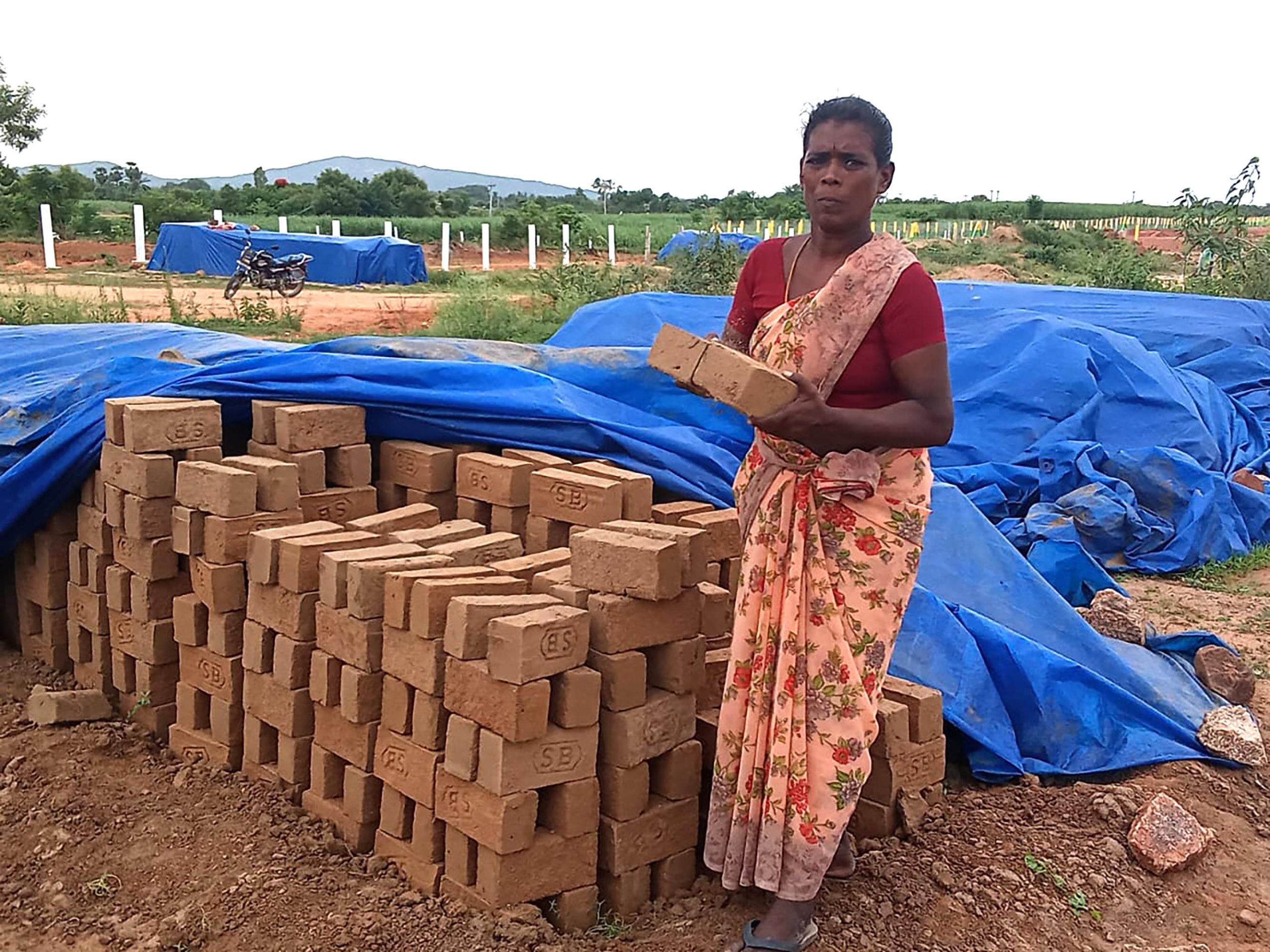
Siragugal, which translates into “wings” in Tamil, is an initiative of the Tiruvallur district administration to rehabilitate and empower former bonded laborers. Ramesh’s family is among the 100 it has supported since April 2022.
“With this new business each family can make INR 4,000 to INR 5,000 (US$48 to US$60) per week if all goes well,” Ramesh says.
The district administration, with the help of non-profit organizations, had conducted rescue operations for families that were under debt bondage. After she and her family were rescued, Ramesh tried her hand at different jobs such as selling fish and picking mangoes and flowers. But she found it hard to make ends meet, barely earning INR 150 (US$1.80) a day.
Tiruvallur district collector Alby John says that he and his team thought of funding a brick kiln for rescued debt laborers such as Ramesh because it would be familiar work to them and provide them with a more secure income source. It is still a fledgling and modest enterprise, but Sirarugal may yet inspire other districts across India and beyond to have similar initiatives for former bonded laborers.
According to a 2017 report by the U.K.-based Anti-Slavery International, 96 percent of brick-kiln workers in India had taken loans from their employers, who then exploited the situation as the workers were usually illiterate. This trapped them in bonded labor.
The United Nations meanwhile defines debt bondage or bonded labor as a practice “where both adults and children are obliged to work in slave-like conditions to repay debts of their own or their parents or relatives.” Among the victims of this practice are migrant workers, who are found across the globe.
Widespread scourge
There are no hard data on just how many people are trapped in debt bondage at present, but the 2021 Global Estimates says that about one-fifth of the estimated 27.6 million people in forced labor situations found in 2021 worldwide were bonded laborers. It also says that bonded labor is “most widespread in South Asian countries including India and Pakistan, where it flourishes … in agriculture, brick kilns, mills, mines, and factories.”
According to the 2019 SAGE Handbook of Human Trafficking and Modern Slavery that had various researchers and academics as contributors, there are around 300,000 bonded laborers in India. Yet while that may seem like a low figure for India for some observers, India in theory shouldn’t even have any bonded laborer by now.
After all, the country enacted the Bonded Labour System (Abolition) Act way back in 1976 that made the practice of bondage “a cognizable offense punishable by law.” Jawed Alam Khan, senior research consultant at the Centre for Budget and Governance Accountability in New Delhi, ays that conviction in debt-bondage cases is rare.
Khan adds that the implementation of the law is flawed. For instance, every state government is supposed to constitute vigilance committees at the district level to survey, identify, and rehabilitate bonded laborers. But Khan says that financial support is often inadequate for these committees.
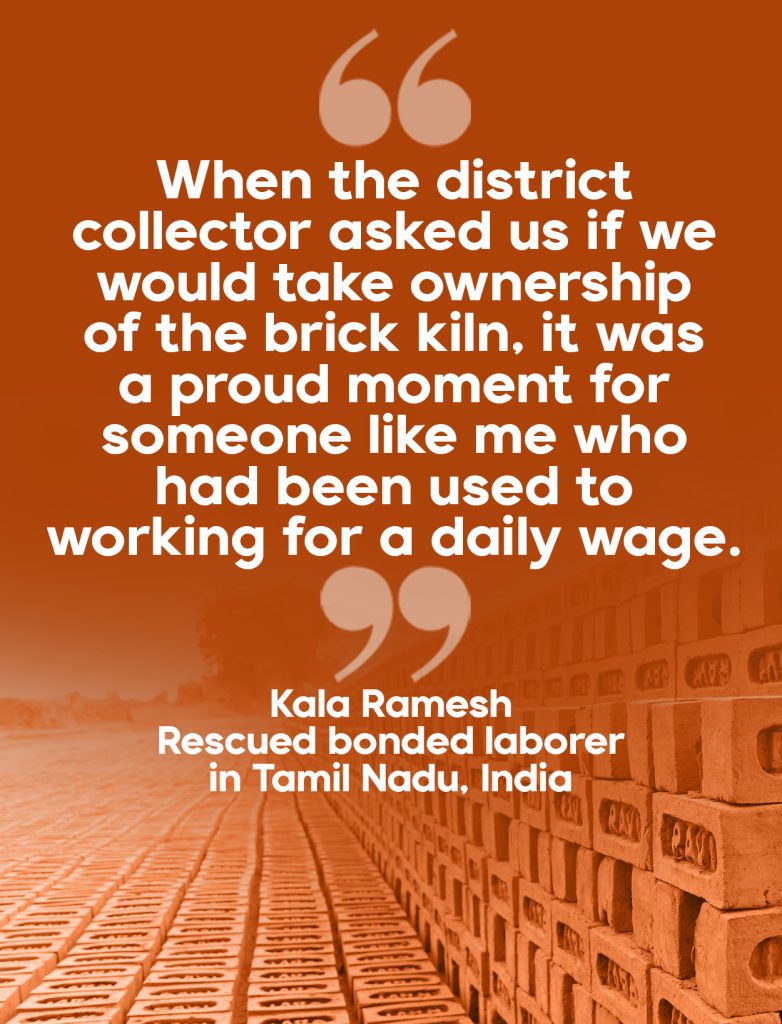
Santoosh Poonia of the non-profit Aajeevika Bureau, which works with rescued bonded laborers, says that for a rescue to happen, a complaint must first be lodged with the district magistrate or a call made to the bonded-labor toll-free number. More often than not, these happen only through the efforts of an NGO. Then, says Poonia, “a vigilance committee is put together, which raids the premises of the workers, along with police personnel.
“Once rescued,” he continues, “they are sent back to their villages.”
Sometimes officials get confused over the identification of these workers, and rescue efforts are impeded, Poonia says. Nevertheless, the online Hindu Businessline, citing statistics from the Ministry of Labour and Employment, said in a report that from 2015 to 2019, an estimated 13,512 bonded laborers were rescued and rehabilitated across the country. This number translated to “an average of nine daily.”
In Tamil Nadu, official data show that by 2018, 65,573 bonded laborers had been rescued and released; presumably, the count began after the Bonded Labour (Abolition) Act came into effect. The state is among the few with an action plan for the rescue and identification of these workers.
Building a business
After the plan was hatched for a community-owned brick kiln for released bonded laborers, the Tiruvallur district administration did a survey to identify the rescued bonded laborers within its jurisdiction. Of the 700 families it found, 100 expressed interest in starting a viable business for themselves. Recalls Ramesh: “When the district collector asked us if we would take ownership of the brick kiln, it was a proud moment for someone like me who had been used to working for a daily wage.”
Sixty of the 100 families that became part of Siragugal were assigned to gathering the firewood used in baking the bricks. The remaining 40, among them Ramesh’s family, were tasked with making the bricks.
Through the Tamil Nadu State Rural Livelihood Mission, the district gave a grant of INR 400,000 (US$4,800) as Siragugal’s working capital. The district, via other government schemes, also provided infrastructure such as a working shed, free power supply, and borewell for water.
“An initiative like this can be useful in terms of hands-on education and opportunity for bonded laborers in the industry,” comments Pauline Oosterhoff, research fellow at the Institute of Development Studies in the United Kingdom. “But the brick-kiln industry has environmental sustainability issues. It can financially be unsustainable because of cut-throat competition with other commercial actors in the industry.”
Siragugal Bricks is the only brick kiln located in Veerakanallore, so there isn’t much competition nearby. Last year, Siragugal made 150,000 bricks and sold them to a government low- and middle-income housing program.
“We had a buy-back agreement because if they were not able to sell, the entire exercise would go futile,” says district collector John. The district bought the bricks at INR 6 (US$ 0.70) per brick.
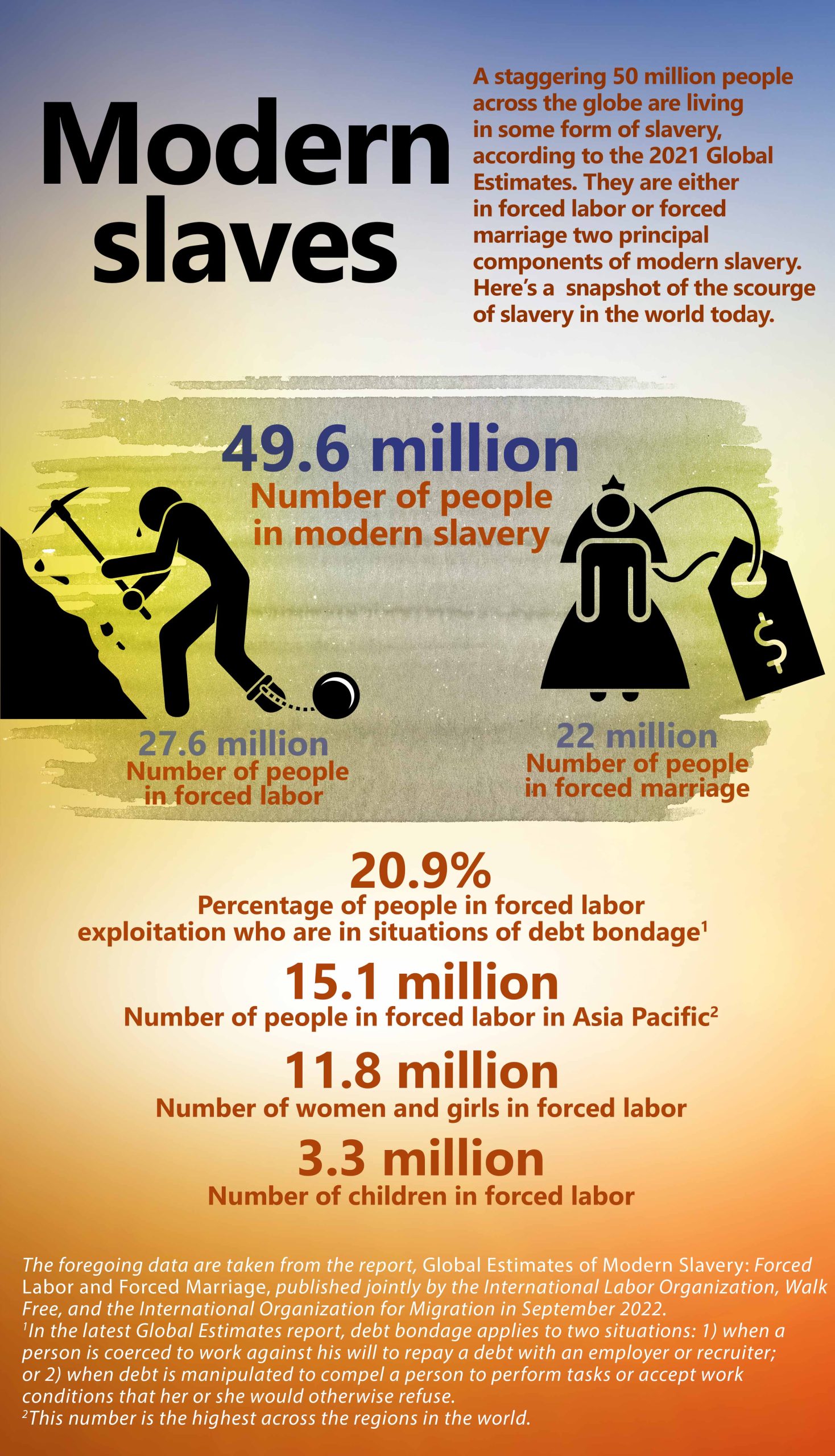
So far this year, however, Siragugal has sold only 22,000 bricks to the government as state housing schemes slow down. Ramesh says that they plan to sell their current inventory of about 50,000 bricks to private organizations and local residents at a higher price.
Tiruvallur District recently approved a grant of INR 5 million (US$60,000) to develop Siragugal further and make it more financially sustainable and environment friendly. It also gave the green light to a chimney for Siragugal’s working shed so that the bricks can be baked there and production can continue even during the rainy season.
But Siragugal is now looking for more owner-workers as 30 of the 40 brick-making families have left. Ramesh says that they had found buying drinking water too expensive after the water from borewell turned out to be non-potable.
“The government has now put a second borewell that provides good-quality water,” she says. “We have electricity, and many facilities. People will definitely come and join us.”
Money matters
Siragugal fits in with the recommendation of an International Labour Organization (ILO) report that grants, not loans, are more useful for released bonded laborers as they usually don’t have assets and have no skills other than those they acquired in what many have described as a form of modern slavery.
Oosterhoff observes that while India has many policies including access to credit both as part of prevention and rehabilitation of bonded labor, implementation is slow.
“Micro-credit and savings groups are useful but often bureaucratic and insufficient,” she adds. “Not every person wants to or is able to be an entrepreneur, or has land to invest in. And bonded laborers and/or their families often have many debts.”
In India, rescued bonded laborers are supposed to get official certificates that would entitle each of them to a one-time cash assistance of INR 30,000 (US$360) as immediate relief. Each is also entitled to avail themselves of various welfare schemes such as house allotment and skills training.
Poonia points out, though: “Not all rescued workers get the certificate due to lack of awareness on the part of authorities. Even if they get the certificate, there is no guarantee that they will be afforded rehabilitation assistance. It depends entirely on the political will of the administration.”
The workers are also entitled to receive INR 100,000 (US$1,200) to INR 300,000 (US$3,600) as compensation from the state — but only when there is a conviction that, as Khan notes, is uncommon. Not one of the former employers of the Siragugal owner-workers, for example, was convicted. Calling the provision “disastrous,” Khan says that the “policy design is not favorable to bonded laborers.”
Too often, rescued bonded laborers turn to loans again and fall into debt bondage once more. Fortunately for members of the Siragugal community, they are also being trained to gain economic literacy by a self-help group called Mahalir Thittam.
Ramesh says that her former employer would undercount the number of bricks or cut her daily wages, saying that her loan still had to be repaid. Being illiterate, she couldn’t keep track, and was often deceived, she says. Now, Ramesh says that she can mentally calculate the number of bricks they made, as well as the money they spent and earned. They also receive coaching on how to speak with clients and government authorities, she says.
“I’m still illiterate,” says Ramesh. “But I know how to negotiate.”
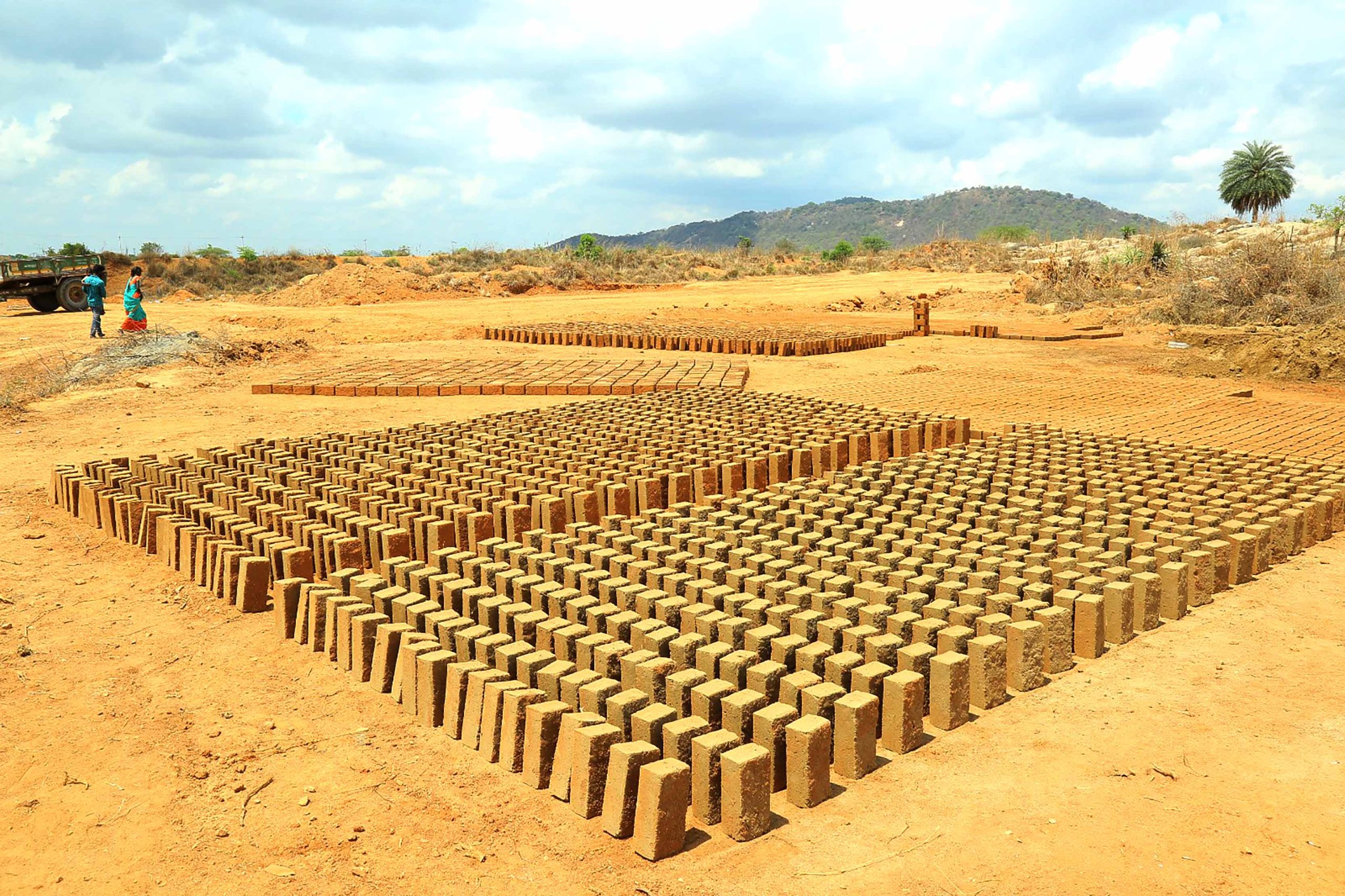
Her two eldest children are illiterate like her after losing many years of school while working as bonded laborers. But her younger daughter is now in 12th grade and wishes to study computer science. Says Ramesh: “I didn’t have the opportunity to study. But we don’t want our children to struggle like us.”◉
Deepa Padmanaban is a freelance journalist based in India. She has written for The Guardian, Discover magazine, Christian Science Monitor, and Mongabay, among others.
This story was supported with a grant from the Thomson Reuters Foundation.










